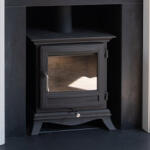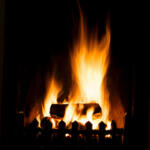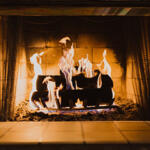

Wood fire troubleshooting for beginners
Following the energy price hike this October, households around the country are keen to minimise their use of gas and electricity. As a result, many have turned to more traditional heating methods with wood-burning stove installation. Once running effectively wood burners can generate substantial heat and create cosy living spaces in the colder seasons. However, lighting a fire and stopping it from dying out early can be a challenge. In this blog, we’ll troubleshoot common issues that often arise.
Poor build
If your fire won’t stay lit there’s a good chance you built it badly. You can’t just chuck wood inside, set it a flame and hope for the best. Build a framework of small sticks called kindling and add some scrunched-up paper in between. On top of this frame add some small to medium-sized logs and light the paper. As the paper burns the kindling will catch fire and in turn set the logs alight. Once the medium-sized wood is burning well you can add your largest logs. Follow this practice for the best results.
Wet wood
No matter how well you build your fire, if the wood you use is too wet it will keep going out. Wood must have minimal moisture (20 per cent) to burn well. Drier wood will burn better as your fire won’t have to extract excess liquid before it can start consuming the fuel. You might be tempted to add damp wood scraps from your garden to a fire, but this is a recipe for disaster. Not only will your fire keep going out, but the wet wood will also result in unpleasant smoke that will irritate your nose and eyes.
You can avoid these issues by purchasing pre-seasoned hardwood logs which have been specifically designed with optimum moisture levels and to burn effectively.
Your one-stop shop for wood fire supplies in London
Whether you need bags of kiln-dried logs or kindling and firelighters, at London Gases we can help. Prepare for rising fuel prices and restock your supply of high-quality wood and place an order with our dedicated team today.
